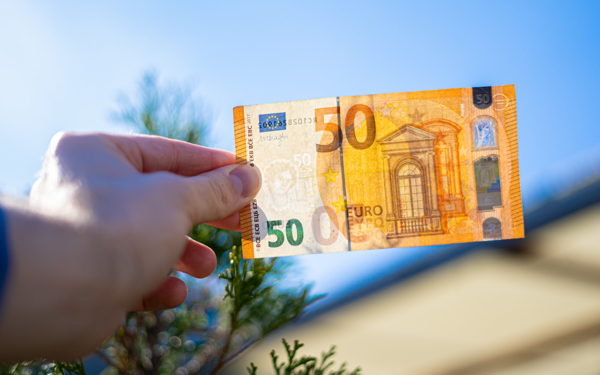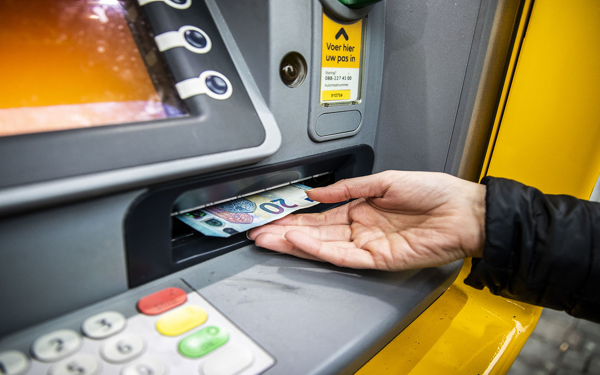Most people, myself included, don't care how their car works as long as it gets them where they need to go. And the same goes for our payment system. However, taking a closer look at what happens under the bonnet may explain why we develop new payment methods that may not seem essential from the consumer's perspective.
Making payments is simple. You can pay with your phone, or with your debit card, or with cash. We mainly use iDEAL when shopping online. At the market we use cash and in shops we often use our phones. Money is transferred instantly and the records are updated. As a consumer, you generally don't need to understand the technical processes involved. But sometimes it helps if you do understand what is going on under the bonnet.
Payments, a public good
Anyone looking under the bonnet will see that our electronic payments are currently primarily handled by non-European companies, such as VISA and Mastercard, and Apple Pay and Google Pay for contactless payments. These companies manage the entire payment process: from your card or phone at the payment terminal in the shop all the way to the bank. They are the motor under the bonnet of our online payment system. And for now, everything is running smoothly. So smoothly in fact, that about two-thirds of such companies handled all card payments in the euro area in the first half of 2024. In the Netherlands, this figure is close to 100%.
Only the cash payments infrastructure is still entirely in Dutch hands. But, as we all know, the use of cash is declining. Only about 20% of point-of-sale payments in the Netherlands are still made in cash and this figure is falling.
Our significant dependence on non-European companies makes us vulnerable at a time when geopolitical tensions are on the rise. If those companies fail for whatever reason, we and most euro area countries will be left without a reliable payment solution. and that is a very bleak prospect. This situation means we do not have ultimate control of our payment systems. Or in technical terms: our strategic autonomy is under threat.
Private solutions
Credit transfers, direct debits, business payments and cash transactions are all coordinated at the European level, except for our electronic and online payments. There have been plenty of European initiatives in the past decades, but none has achieved widespread success. If that were the case, there would be no need to look so closely under the bonnet.
Fortunately, preparations for European in-store payments solutions (both online and offline) are now in full swing. Private initiatives are being developed, such as Wero and its southern European counterpart EuroPA. While these initiatives are promising and have our full support, they are still in their infancy and do not yet cover the entire euro area. Notably, even 25 years after the introduction of the euro, we still do not have an independent, pan-European digital payment solution that works everywhere in the euro area.
Digital euro
We also want to look ahead to the role of public money in the digital age. And this is where the digital euro comes in: it is not a new currency, but an additional form of public money issued by the central bank alongside cash. It runs on an independent, European infrastructure and you can use it across the euro area, at home, on holiday and for making online purchases from online shops in any euro area country. If there is a power outage, you can also pay offline. Since not everyone has cash in their pockets anymore, this is a nice new feature. And it will offer more privacy than other digital payments, because you can transfer your digital euro credit directly to your phone or your debit card. This will allow you to pay without leaving a digital data trail, although there will be limits on the amount you can pay anonymously to prevent money laundering.
Choices that make a difference
The legislative framework for the digital euro is now being considered by the European Council and the European Parliament. If this work is completed in 2026, which seems likely, the digital euro could then be introduced in 2029 at the earliest. Wero, the successor to iDEAL, is expected to become available in the Netherlands next year.
Strategic autonomy is about whether European citizens and companies are able to make payments without foreign actors or international incidents jeopardising that ability. Initiatives like the digital euro, Wero, and EuroPA strengthen the European payments landscape and encourage entrepreneurship. We need more European-based payment instruments, both private and public, to boost our strength and resilience. This requires coordinated investment and decisive leadership to keep the payment system engine running smoothly.
Introducing a new means of payment is a long-term effort, and it may take ten years before a European solution can be launched. Developing the digital euro involves political debate, technical testing, and market pilots, as it is to be a public means of payment, available to everyone in Europe. This requires cooperation from consumers and retailers who share their needs and concerns, and from banks and other parties providing their payment services. This is how we will be able to keep payments simple, affordable – and European.
Will you notice any changes in your daily payments in the future? Probably not, and you will still be able to pay in an easy and familiar way. But under the bonnet, we will continue to work hard to ensure that you can make your payments smoothly, securely and quickly, no matter what.





